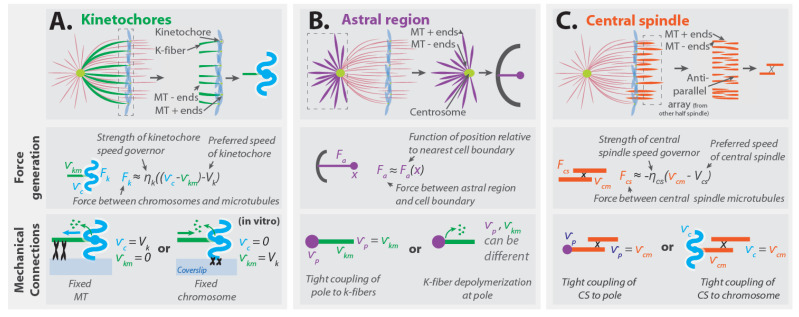Figure 4.
((A), top) A coarse-grained mechanical model of kinetochore forces and K-fibers, which are bundles composed of kinetochore microtubules. ((A), middle) Kinetochores apply forces between chromosomes and kinetochore microtubules, . This force depends on the extent to which the relative velocity of chromosomes, , and kinetochore microtubules, , differs from the kinetochore’s preferred speed, . ((A), bottom) In vitro movement of the microtubules and chromosomes is dependent on which mechanical linkages are present. ((B), top) A coarse-grained mechanical model of the astral region forces. ((B), middle) The astral region applies forces between the pole and the cell boundary, . This force depends on the distance between the pole and the cell boundary, . ((B), bottom) Two different possible couplings with implications for the relationship between the velocity of kinetochore microtubules, , and the velocity of spindle poles, . ((C), top) A coarse-grained mechanical model of central spindle forces. ((C), middle) The central spindle applies a force between the central spindle microtubules, . This force depends on the extent to which the velocity of the central spindle microtubules, , differs from the central spindle’s preferred speed, . ((C), bottom) Two different possible couplings of central spindle microtubules: either tightly coupled to chromosomes or tightly coupled to poles.

